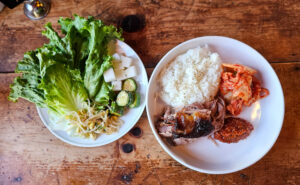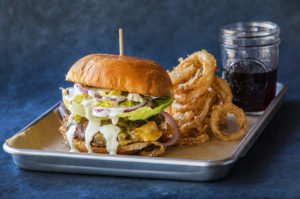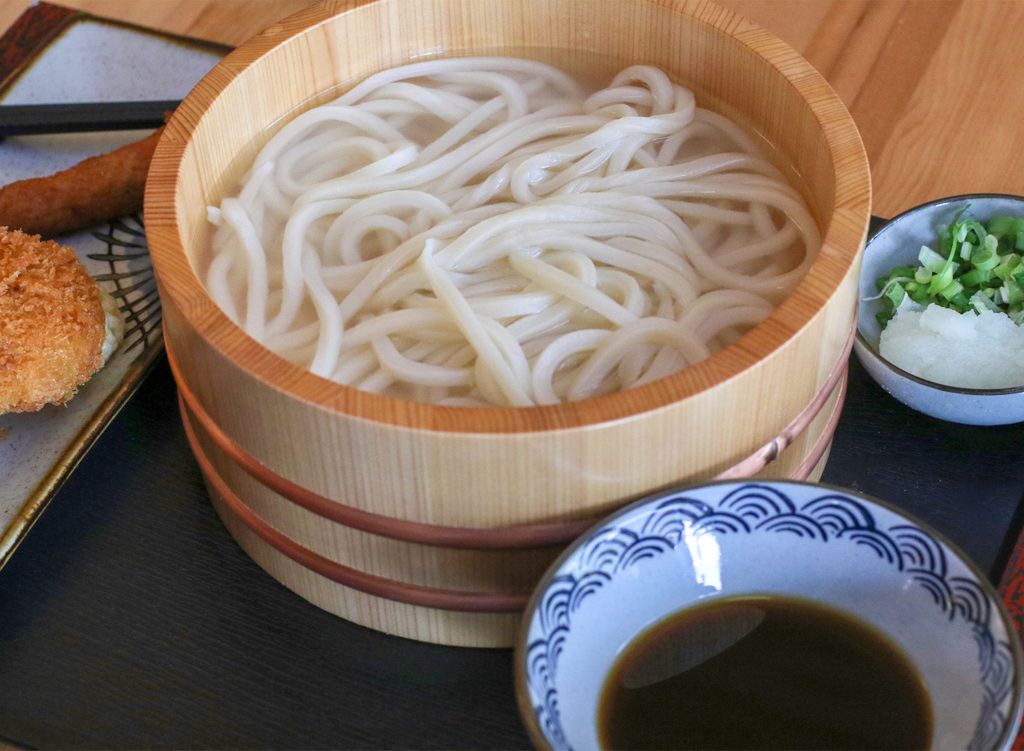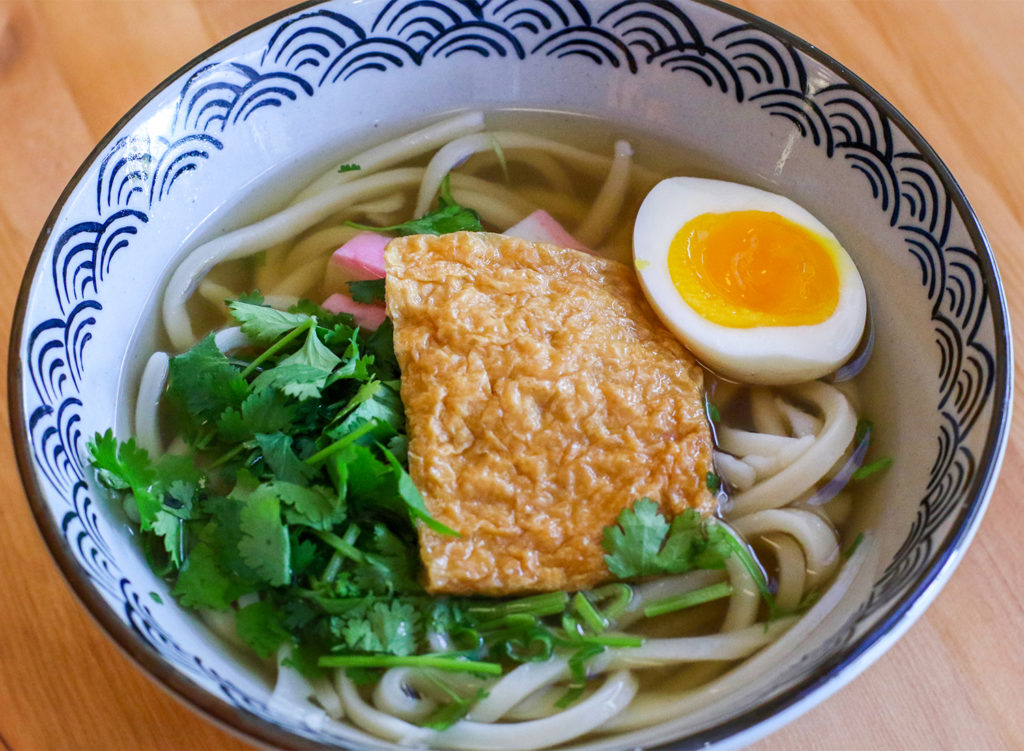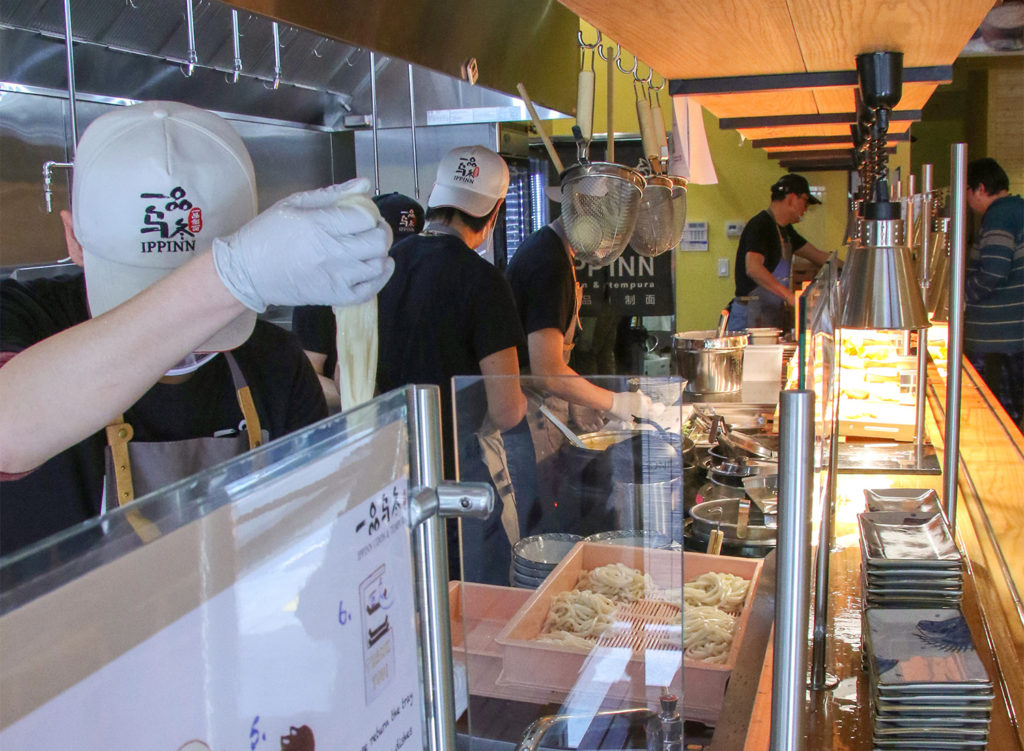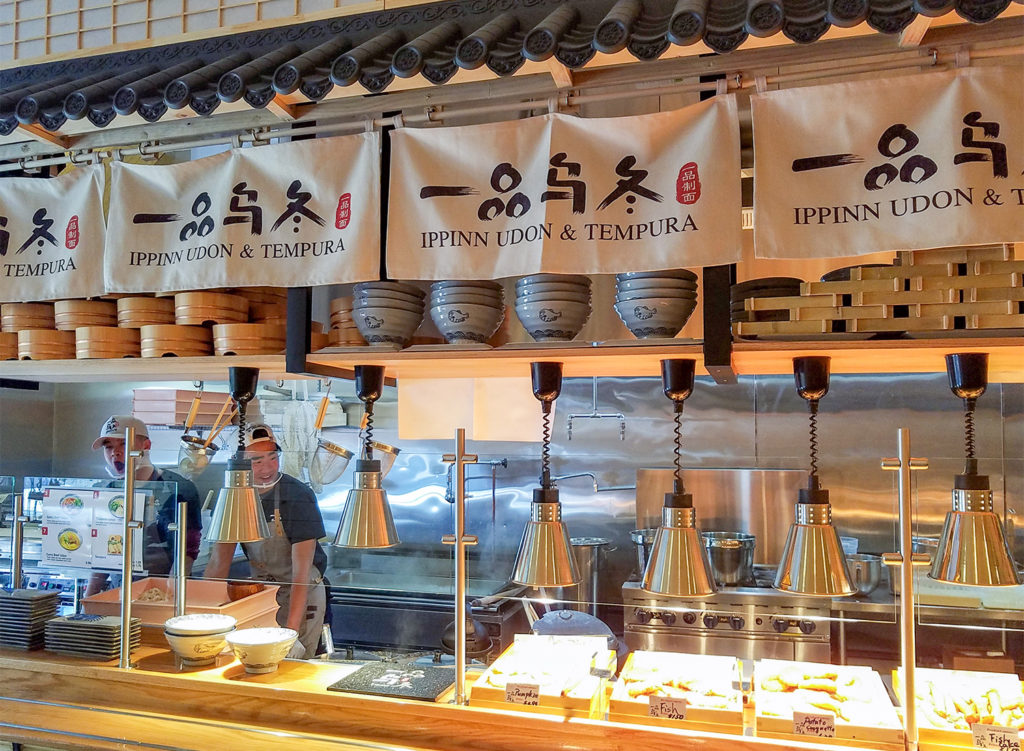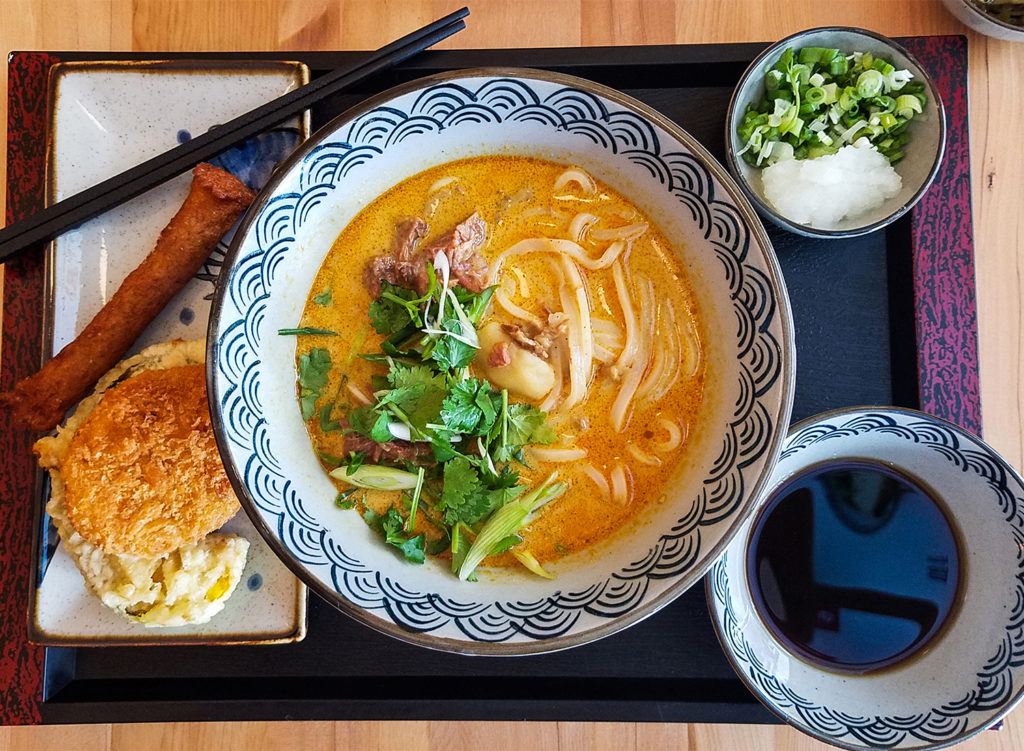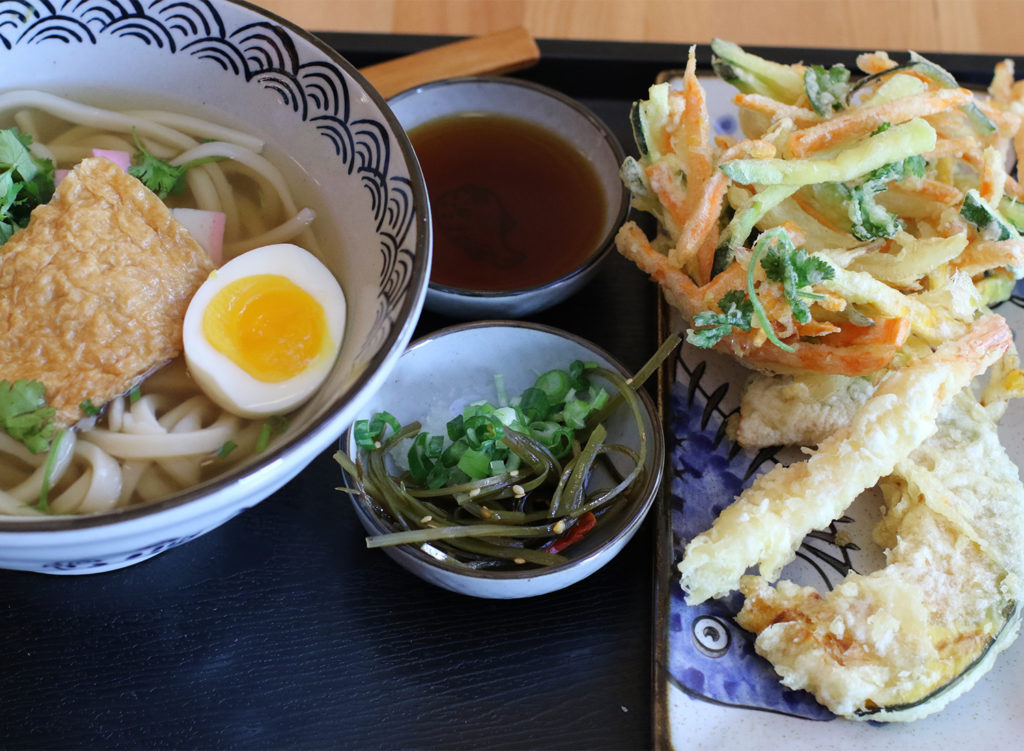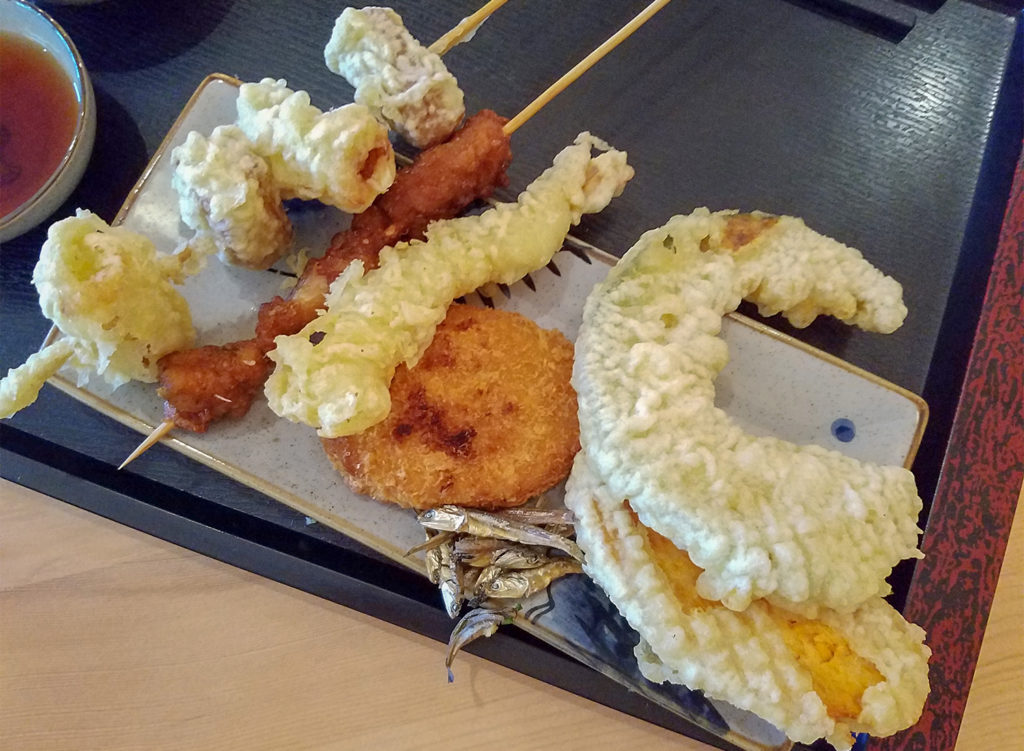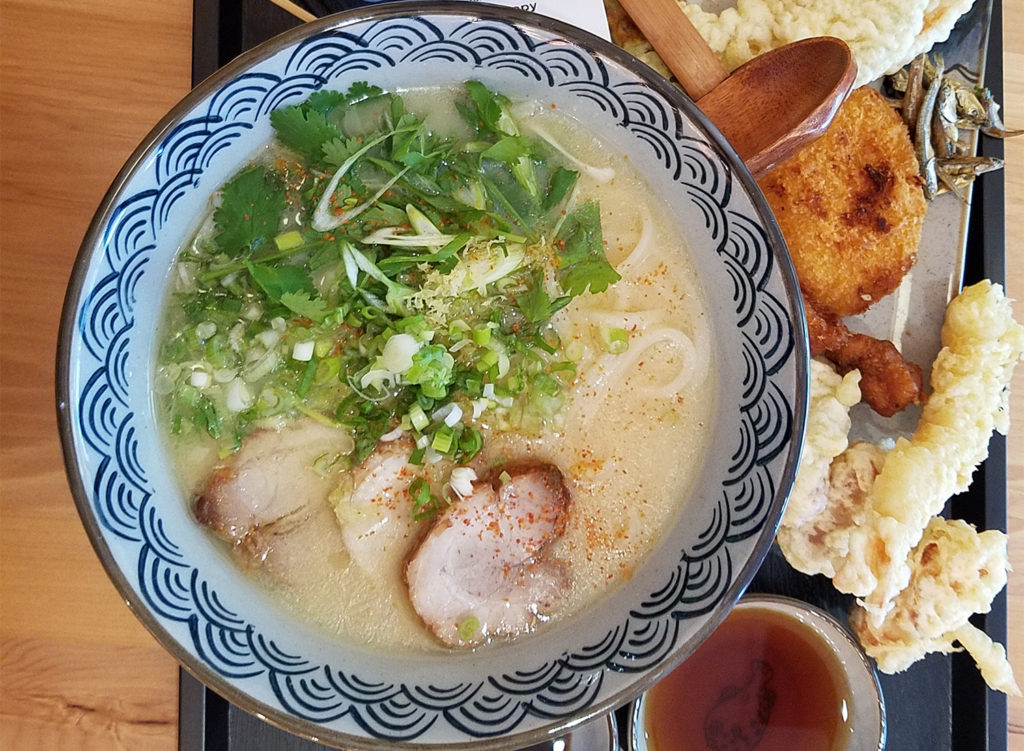Move over ramen, it’s udon’s turn in the spotlight.
The thicker, sassier noodle cousin to ramen, udon are chewy, slippery strands of cooked wheat and water that beg to be sauced, souped and slurped. Served hot in winter and cold in the summer, they’ve been a Japanese staple for nearly a thousand years — far longer than the two-hundred or so years since the introduction of ramen from China. Though, to be clear, nobody puts ramen in a corner.
It’s just that this simple homey dish is so, well, simple. While ramen lovers argue over the types of broth particular to the many variations of ramen noodles, how to make the ramen, and the specifics of each prefecture’s style, udon is classically served with dashi broth (a briny broth made with seaweed and shrimp flakes), some scallions and a soy dipping sauce — and that’s it.
Not that we’re exactly udon experts, but a brief lesson from newly-opened Ippinn Udon & Tempura owner Frank Wu helped to dispel some of the mystery of this very Japanese experience. The Mendocino Avenue shop he recently opened with collaborators Teng Yushu and Mason Lin is a sort of upscale cafeteria experience where you order a type of udon — from simple kama udon to cross-over dishes like spicy beef or curry udon noodles — then slide the tray past a variety of tempura, grabbing (with tongs of course) whatever tickles your fancy.
“ People are already familiar with ramen. We wanted to introduce udon to this region,” said Wu who, along with his business partners, hails from China rather than Japan. A businessman through and through, Wu saw the popularity of udon bars in San Francisco and wanted to bring the first to the North Bay. He is already planning a similar fast-casual concept for sushi in the nearby Big Lots shopping center.

Like all the staff, Wu wears dentist-like face shields to keep things nice and sanitary. It’s like a personal sneeze guard, and more than a little funny when you try to figure out how the contraption stays on.
Ippin Udon & Tempura has been in development for nearly two years, and business partner Teng Yushu spent a month enrolled in “noodle school” in Kagawa, Japan learning the art of udon noodle making.
Part of the instruction is how to keep their $50,000 Yamato udon machine in good repair, since there’s no way to get a quick service call from across the ocean.

The nondescript appliance sits by the window, quietly chopping noodles for hours.
It’s a fascinating process to observe, as Yushu fires up the noodle maker that does everything from mixing the flour and saltwater mixture to kneading, rolling and cutting the noodles.
In less than 5 minutes, three balls of rested dough (they rest about 18 hours after kneading) have gone through rollers with increasing pressure to get just the right thickness. The dough is carefully folded, then fed through a chopper, where ribbons of udon noodles fall onto a tray.
They’re almost immediately tossed into a vat of boiling water, where Yushu stirs the noodles constantly with a large wooden roller. Watching the noodles twist and turn in the boiling pot is hypnotic.

After about six minutes, he scoops the noodles into a cloth net, shocks them with cold water, swirling the noodles to release starch.
They’re shocked in ice, and twisted into small ropes to later be portioned into bowls.
Wu is carefully monitoring what udon dishes work, like the spicy beef, and which are less approachable. Like California rolls, which are a uniquely American invention, giving traditional recipes a little wiggle room tends to bring more folks to the table.
As the weather warms, they will be serving cold udon noodle dishes as well.
Overall: It’s best to approach Ippinn with a sense of curiosity and enthusiasm because there are things on the menu even seasoned foodies won’t immediately recognize. A welcoming and explanatory staff make the adventure fun, and student-friendly prices make it a quick grub stop that almost anyone can appreciate. Slurping welcome!
Best Bets
Curry Udon, $6.99: A creamy coconut milk broth with bits of beef, noodles and (optional) cilantro. It’s an easy introduction to udon that marries Indian and Japanese cuisine. A favorite.
Kama-Age, $4.99: Served in wooden noodle bowls (kama), this is the most classic udon dish. Noodles, clear broth, grated daikon and a soy-based dipping sauce. Light, bright flavors and super simple.

Tofu Udon $5.49: Sweet fried tofu skin, fish cakes, egg and a dashi base. A great lunch bowl.
Tonkatsu Udon, $7.99: Pork belly chashu with pork broth. The most popular udon, it’s super rich and hearty.
Tempura: Udon’s best friend, tempura are frequently dipped into the broth. Selections change daily, but expect things like panko-breaded and fried pumpkin, fish cakes, prawns, potato croquettes, and vegetable nests. They range from .60 to $1.70 for each piece. Pumpkin is our favorite.
Ippinn Udon and Tempura, 1880 Mendocino Ave #D, (near Mombo’s Pizza) Santa Rosa, 707-521-9911, ippinnllc.com




